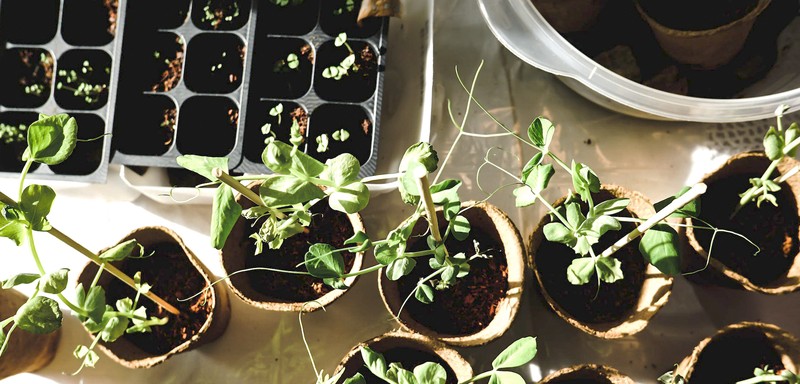
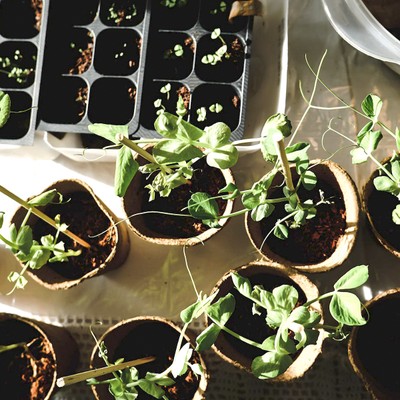
The Winter Jobs To Do In Your Garden
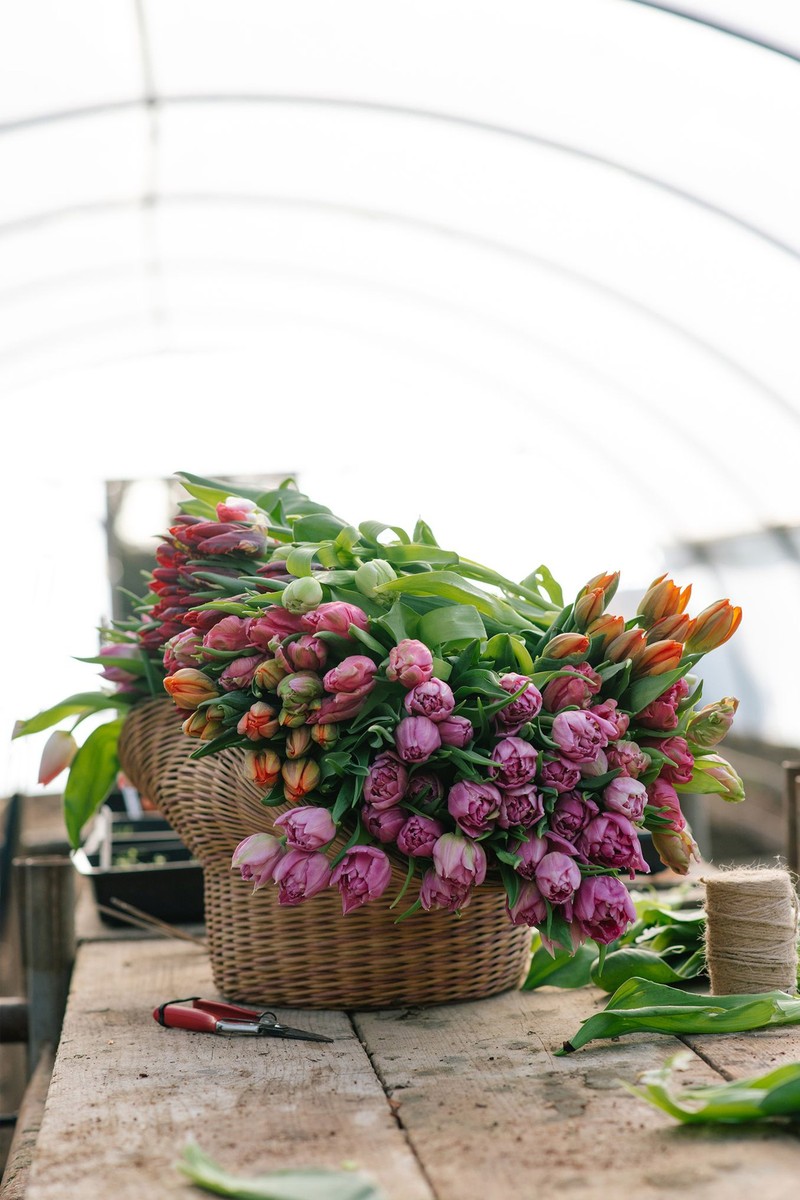
Prune Fruit Trees & Shrubs
“January is a good time to prune your apple and pears trees. Whether you have some branches growing in the wrong direction or the trees are simply becoming too ‘leggy’, prune them now as the trees will be lying dormant – they don’t wake up until the spring. Cut back any herbaceous plants that have collapsed to the bed floor from last year. You might choose to leave your Echinacea, for example, to offer some structure within your winter beds – plus the seed heads are great for the wildlife.” – James Field, The Gardening Gent
“Pruning shrubs and trees during the winter months can help improve their overall health and shape. It's important to prune when the plants are dormant, as this will minimise the risk of disease and allow for faster healing. Use pruning shears or a pruning saw to remove any dead, damaged or diseased branches.” – Mike Futia, founder of Nerd Lawn
“Prune your fig trees. Figs grow best on south facing walls and need to be uncluttered to allow as much sun as possible to land on the ripening fruit. Cut out any branches coming out from the wall, branches that are cluttered next to each other and old branches that just take up space.” – Nicola Talbot, head gardener at Falconhurst Estate
Plant Bulbs
"January is so exciting from a gardener’s point of view as it is the month in which to plan, move, reduce and create. If you missed the bulb planting in October, don’t panic as you can still plant tulips now – just make sure to plant them low to give them the best chance. Also, consider what you want to plant in the way of wildflower seeds, consider the colourway and order them now in time for March.” – Colin Gray, managing director at Lavender Green Gardens
“If you want to plant bulbs indoors, one of the easiest to start with is paperwhite daffodils, such as Narcissus papyraceus, with highly fragrant white flowers. Plant them close together in shallow pots or bowls filled with bulb fibre or compost, making sure the growing tips stick out just above the top of the compost. Put them in a cold, dark place for eight weeks, which will encourage the flowering stems and roots to develop. Keep the bulb fibre or compost just moist. When you see that new shoots are about 4-5cm tall, bring them into a dark room away from bright sunlight. The leaves will gradually turn green, and you can slowly increase the light levels as they do. The flowers will soon follow.” – Mark Lane, BBC Gardener’s World presenter & expert at Stannah
Take Care Of Roses
“January is the perfect time to prune your roses. Choose a day when temperatures are not freezing. Make sure you have a good pair of gauntlet gloves and a sharp pair of secateurs, then keep this expression in mind: ‘let your enemies prune your roses’, meaning you can do it fairly generously. Take a third off the bush, removing all dead and diseased wood and try and open up the middle of the bush to aid airflow. Prune to just above a leaf bud and preferably an outward facing one. Ideally one wants to create a goblet shaped shrub. Once pruned, put a handful of slow-release fertiliser around the rose and then a layer of mulch to get your roses off to a good start in the spring.” – Rosebie Morton, founder of The Real Flower Company
“I like to buy bare root roses in the winter and plant them while they are dormant. It’s much cheaper than buying potted roses later in the year. Just make sure the ground isn't frozen or waterlogged when you plant them. If your bare roots arrive and the ground isn't suitable for planting, it’s best to put them in a big pot and cover the roots with compost. Once you are ready to plant them into the ground, give them a soak for a couple of hours. Dig a hole that's deep and wide to give the roots plenty of space to grow. Mix in manure (ideally two years old) or good quality compost. I like to add rose food or mycorrhizal fungi over the roots to help with growth and flowering in the first year. Fill in the hole, then add mulch and water.” – Hannah Bryce, gardener and co-founder of Minnow and Wolf Flowers

Make Your Own Soil Conditioner
“At this time of year, it’s all about tidying your garden. Leaves will have been falling for a few weeks but rather than waste them, turn them into an excellent soil conditioner. Collect the fallen deciduous leaves and place them into a black bin bag with some water from a watering can. Tie up the bag, make some holes in the bottom and place it somewhere in the garden where you can forget about it for eight to 12 months. After this time, open the bag and you will have a crumbly, brown mix which has beneficial bacteria and pathogens that help new growth on plants; your garden will love you for it come next year. There is one exception, however. If your fallen leaves have signs of disease, mould or fungus, burn or dispose them, as you will not want to transfer those pathogens back into your soil.” – Mark
Fertilise & Aerate The Lawn
“Fertilising the lawn in the winter can help it recover from the stresses of the summer and promote healthy growth in the spring. Choose a fertiliser that’s specifically formulated for winter use and follow the manufacturer's instructions. You should also aim to aerate the lawn, which involves punching small holes into the soil to allow for better air circulation and water penetration. This can be done with a hand aerator or a machine and is especially important for compacted or heavily used lawns.” – Mike
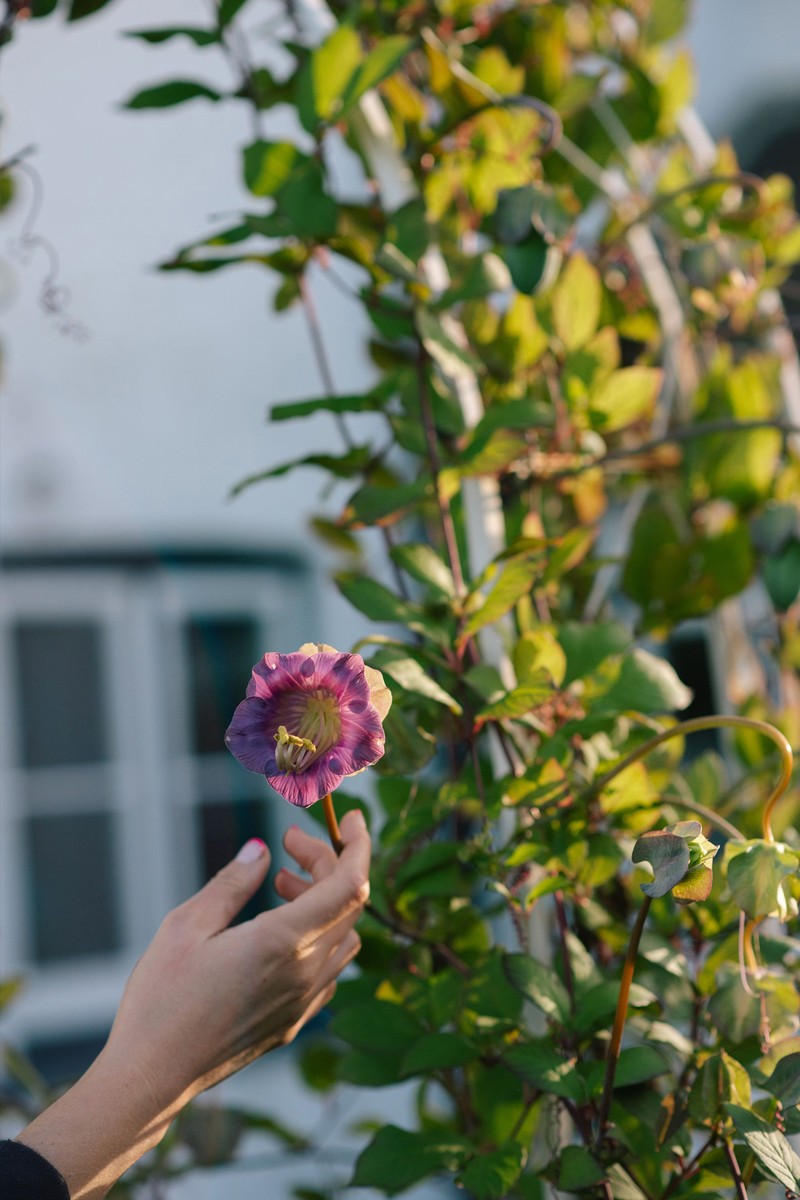
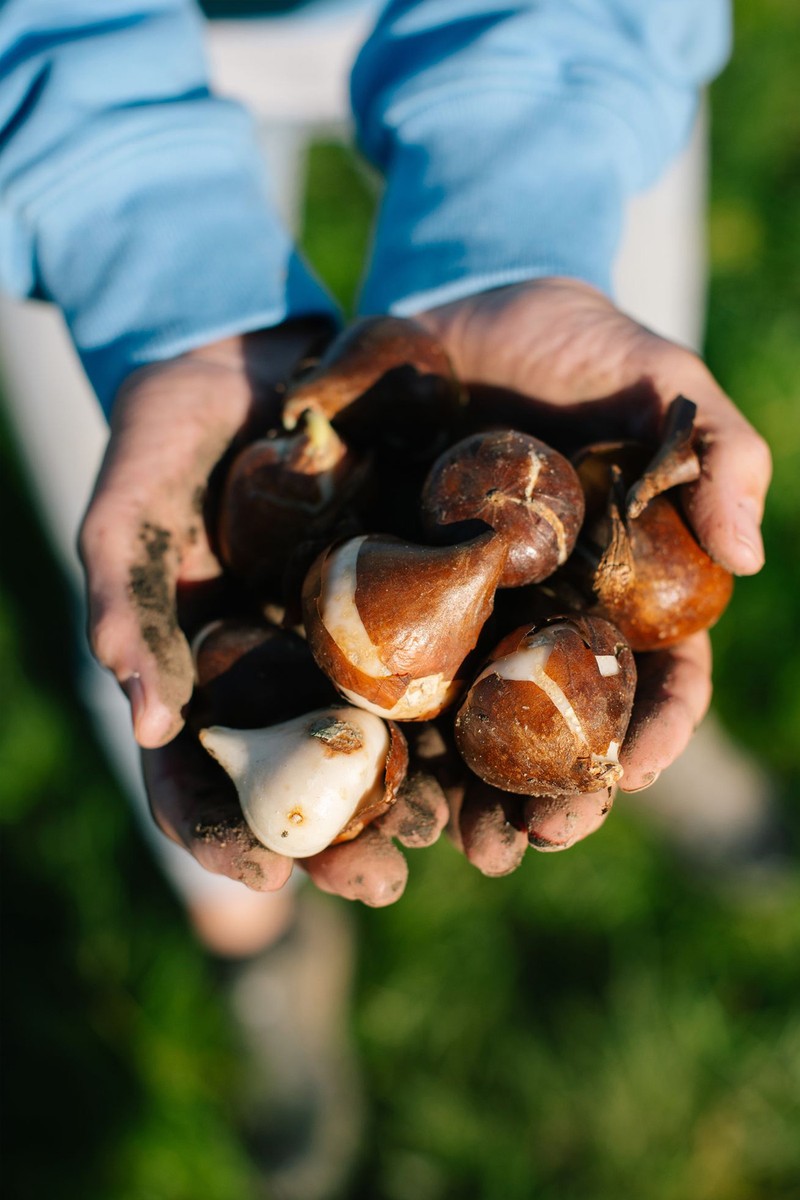
Plant Larger Trees
“Planting larger trees in winter is ideal as they are still in a dormant phase and will begin slowly spreading their roots. By the time spring approaches, the tree will already have a root network. You should avoid planting young trees in waterlogged or frozen soil, so it’s best to wait for milder weather if particularly rainy weather or a cold snap is expected. Temperatures around 10°C are usually best for planting trees. Remove all the packaging from the tree and spread out the roots gently. You’ll want to place the tree in a hole that is no deeper than the roots but wide enough for the roots to spread out easily. While plants don’t need much watering in the winter, it’s best to give trees a good watering before placing them in the hole and covering them with soil.” – Matt Jordan, gardening expert at The Greenhouse People
Tend To The Greenhouse
“If you have an unheated greenhouse, you can warm it up by adding several buckets of water or watering cans. The water acts as a storage heater and releases warmth overnight. This helps to stop frost forming on the inside of the greenhouse and offers extra protection for your plants. You can also use old bubble wrap to insulate your greenhouse when it gets really cold. Mine is clipped to the inside of the greenhouse with pegs from the washing line.” – Hannah
“With many plants going dormant in the winter, it’s the ideal time to get your greenhouse cleared out and prepped for new plants. Cleaning your greenhouse and getting rid of clutter will ensure you get the most amount of light to your plants and allows you to target any problems (such as pests) before you start gardening. The best way to begin your clean-up is by removing everything from the greenhouse. This gives you the opportunity to properly sweep the floors, clean the glass and get rid of any items that aren’t necessary. Hot, soapy water is the best solution to get rid of any algae, grime or dirt stuck to the glass. If your greenhouse has a gutter, this is also the perfect time to clean it out and ensure there aren’t any leaves or twigs blocking it.” – Matt
/https%3A%2F%2Fsheerluxe.com%2Fsites%2Fsheerluxe%2Ffiles%2Farticles%2F2023%2F01%2Fwinter-gardening-jobs6.jpg?itok=nF5g4bYb)
Protect Pots & Plants
“If you love growing plants in containers, now is the perfect time to protect both your pots and plants. Clay pots can be very expensive and not all of them are frost-proof. Recycle bubble wrap and wrap it around the pots, then secure it in place with string or bulldog clips. Never wrap a plant in bubble wrap as moisture will form inside it, leading to harmful pathogens and diseases. For plants, use horticultural fleece. Wrap this around your plants and again secure in place with string. For tender plants that cannot be moved indoors, such as tree ferns, pack the crown of the plant with straw and the old remaining fronds, then wrap in fleece. Lift pots off the ground using pot feet, bricks, stones or pieces of wood. This prevents water collecting underneath the pots, which can freeze and have a detrimental effect on roots.” – Mark
Check For Pests
“Pests, such as slugs and snails, can be a problem in the winter months. Keep an eye out for these pests and take action to control them if necessary. There are a variety of organic and chemical controls available, such as slug bait or copper strips. Frost can also damage or kill tender plants, so it's important to take steps to protect them during the winter months. Cover plants with frost blankets or burlap to help insulate them or move them indoors if necessary.” – Matt
Winter-Proof Furniture & Tools
“It's important not to forget about furniture. A lot of tables and chairs are designed to stay out all winter, but it’s essential to wipe everything down and apply protective oils to wooden furniture. Oil needs time to soak in, so don’t leave it until the spring. If possible, store your furniture in a shed, garage or loft and wash the cushion covers. Garden tools can be cleaned and hung up. To prevent rust, clean and oil metal blades before putting your tools away for winter. Secateurs should be taken apart and cleaned properly to remove soil, debris, rust and pathogens. Gardening gloves should be stored away along with other gardening equipment.” – Mark
For more information and gardening tips visit TheGardeningGent.co.uk, NerdLawn.com, Falconhurst.co.uk, LavenderGreenGardens.co.uk, RealFlowers.co.uk, GreenhousePeople.co.uk and MinnowAndWolf.com
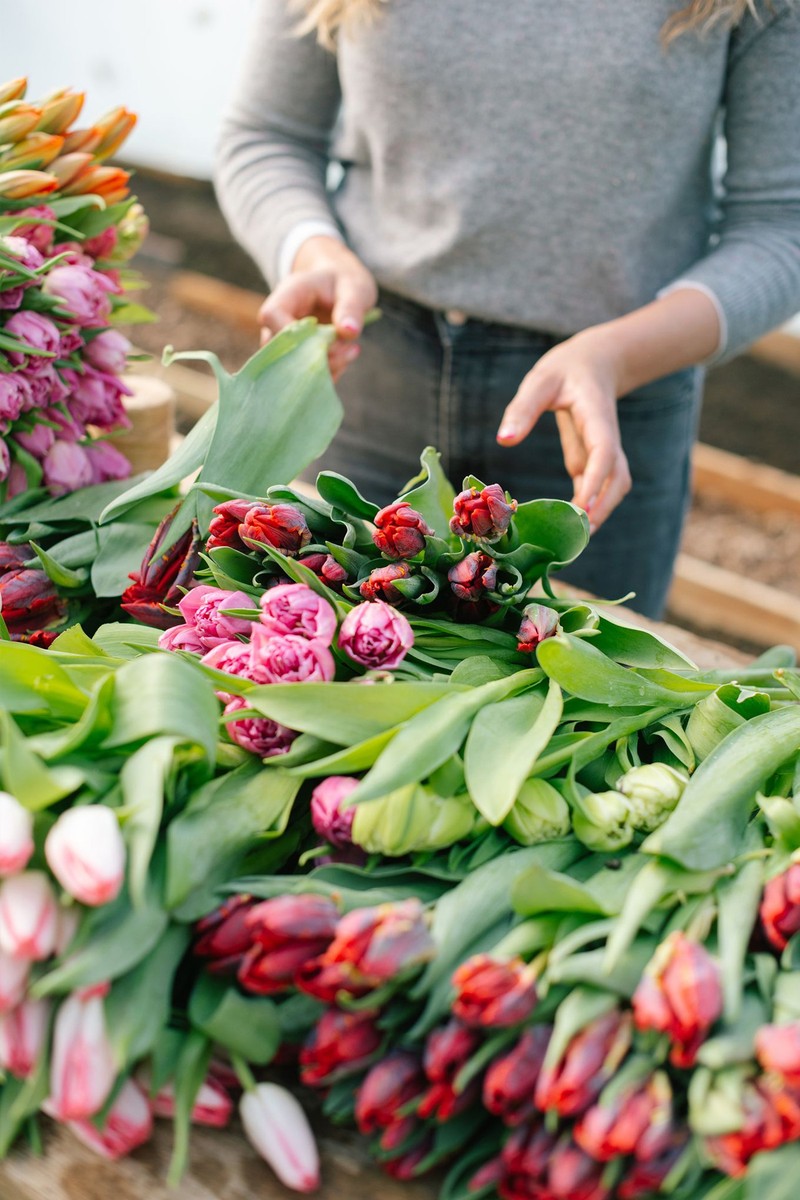
DISCLAIMER: We endeavour to always credit the correct original source of every image we use. If you think a credit may be incorrect, please contact us at info@sheerluxe.com.

